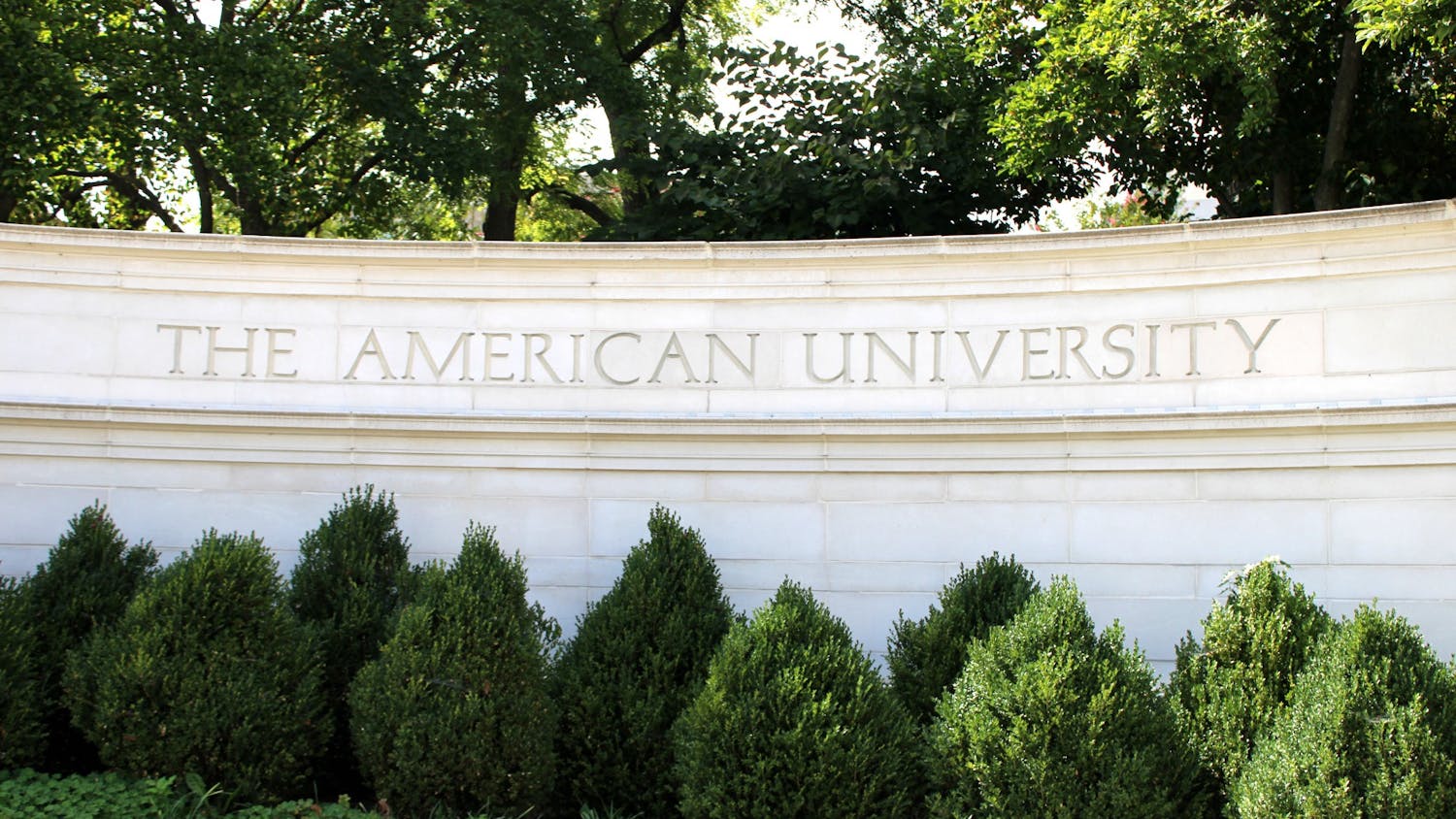On Saturday, EcoSense members on a tour of AU and the surrounding neighborhood learned how, after 16 years of digging for WWI-era munitions, much work still remains for the Army Corps of Engineers.
EcoSense, the student-run environmental organization, is attempting to draw students’ attention to the health and ecological problems associated with the chemicals buried underneath the Spring Valley neighborhood.
Kent Slowinski and Allen Hengst, co-founders of the “Environmental Health Group,” led the tour, which took students on a two-hour walk that began at the McKinley Building and ended at 4825 Glenbrook Rd.
Their group advocates for more thorough historical research, investigation and cleanup of the Spring Valley Formerly Used Defense Site by organizing panel discussions, informal discussion groups, exhibits and walking tours. Hengst is also the circulation manager at the Pence Law Library in the Washington College of Law.
During the tour, EcoSense members heard details about the Spring Valley FUDS — one of more than 5,000 contaminated sites in the United States once used by the military that require cleanup.
The Spring Valley FUDS holds the unique distinction of being the only site with both chemical warfare agents and munitions in a residential neighborhood and on a university campus, according to Slowinski.
“I think events like this are probably our best route [to raise awareness],” said Rachel Voss, an executive board member of EcoSense and a senior in the School of International Service. “There’s obviously mobilization going on in the community, but we feel that a student group is a lot better equipped to draw AU students’ interest on a thing that impacts them directly.”
Sarah Lipuma, the newly appointed environmental science officer at EcoSense and a freshman in the College of Arts and Science, said EcoSense is getting more involved because of the issue’s pertinence to the students.
“It’s right on our campus, it’s a health hazard, [and] it’s dangerous to the students,” she said. “It’s been dangerous in the past — like for the Child Development Center, the reason they don’t have it in its original place is because of the arsenic levels in the soil.”
In 1917, AU offered its grounds and buildings to the military for use as a large-scale chemical warfare research center. The land the military used included 90 acres of university property and 500 acres of privately owned farmland adjacent to AU, The Eagle previously reported.
The Bureau of Mines and the Army’s Chemical Warfare Service developed and tested approximately 600 gases at AU intended for overseas use.
These chemicals included mustard and arsine gases, phosgene and a new mustard agent called lewisite.
Mustard gas is known to cause blisters, temporary blindness, breathing problems and death. Lewisite is an arsenical material with an LD50, or median lethal dose, that is 100 times more potent than regular mustard, The Eagle previously reported.
The EcoSense members also heard criticism of the university’s efforts to inform students about just how dangerous the buried chemical weapons are to their health.
“One of the things we’d like to see American University do is be more transparent, open up their archives and provide students with more complete and accurate information,” Slowinski said, urging students to get more involved and “put pressure on the university to do the right thing.”
“It’s my understanding that some of their updates downplay the risk and extent of contamination,” he said.
Kristin Kozlowski, a graduate student in AU’s Public Anthropology program, said the information came as a surprise.
“It’s pretty shocking. I didn’t know any of this previously,” she said. “I hadn’t seen this in any literature from campus or anything.”
Lipuma expressed a similar response.
“I had no idea that AU even had these test sites. It’s frightening that so many people still don’t know.”
The most significant aspect of the tour was hearing the numbers and realizing how serious the issue really is, Voss said.
“I think that’s the biggest problem with students’ knowledge of this,” she said. “That kind of knowledge can turn something from a joke that you tell your family over Christmas dinner, ‘Ha-ha, they’re extracting munitions form my school,’ into something much more serious.”
After taking the tour, Emmett McGregor, a freshman in the School of Communication, said transferring to another school would not be out of the question.
“What I’ve learned about the essentially intentional reduction of transparency by the administration [at AU] has significantly impacted my consideration of transfer as an option,” McGregor said. “Also, I would say that more than the actual issue of the contamination, [the administration’s] approach to contamination has significantly decreased my view of the school as an institution.”
You can reach this staff writer at ccottrell@theeagleonline.com.




